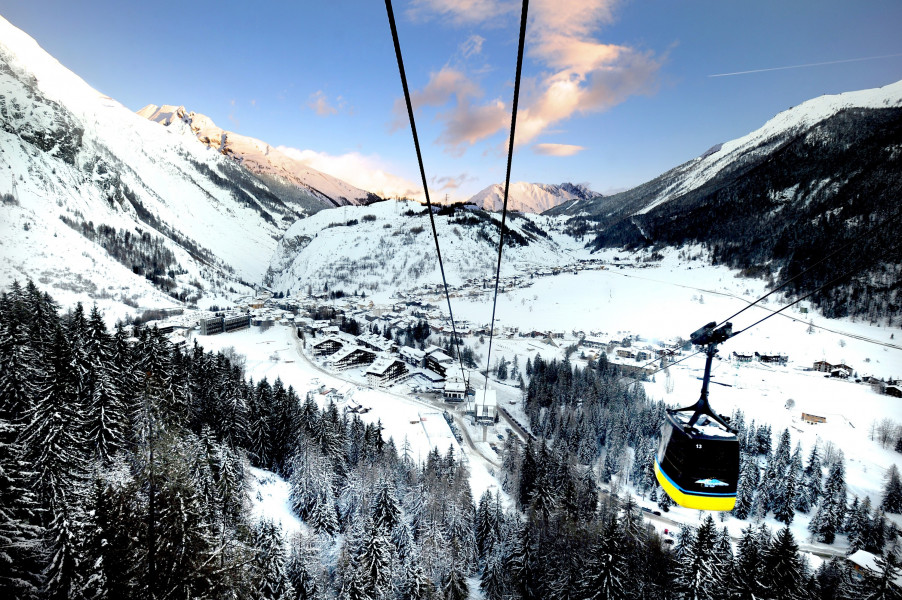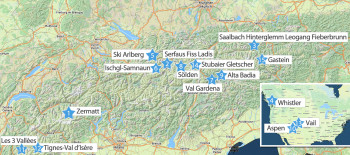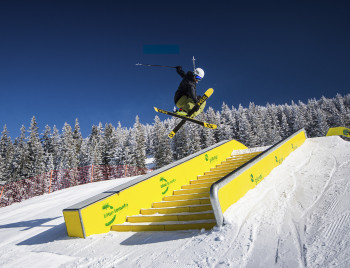Skiing in different countries on one day - that's possible! Many mountain ranges do not stop at the national border, so some ski resorts stretch across two nations. We have selected the best skiing areas for you for - in the truest sense of the word - unlimited piste pleasure in the Alps.
Oberstdorf - Kleinwalsertal
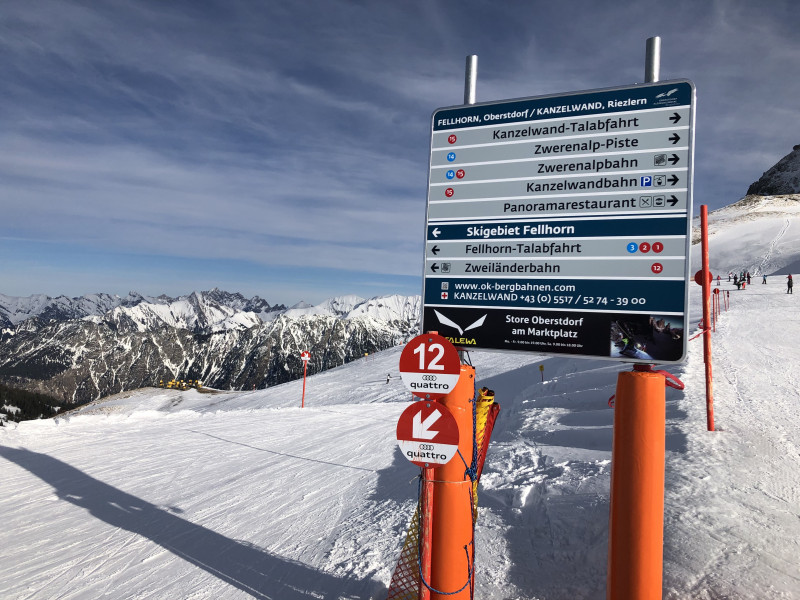
The Bavarian Oberstdorf and the Austrian Kleinwalsertal share the slopes at the Fellhorn and Kanzelwand ski mountains. The Kleinwalsertal can only be reached by car via Germany, so the two destinations are closely connected even outside of skiing. Beginners start their skiing holiday best in Riezlern on the Austrian side, because there is a nice practice area in the valley. Experienced skiers, on the other hand, can let off steam on the many red marked slopes throughout the entire ski area.
In addition to the Fellhorn Kanzelwand ski area, the Oberstdorf Kleinwalsertal ski region also includes the ski areas of Nebelhorn, Söllereck and Walmendingerhorn-Ifen-Heuberg. Altogether, a total of 130 kilometres of pistes are available to winter sports enthusiasts.
Zugspitze

The slopes on Germany's highest mountain Zugspitze can also be reached from Austria, as the country border runs directly along the Zugspitz plateau. In Germany, winter sports enthusiasts start from Lake Eibsee near Garmisch Partenkirchen to Zugspitze. From the Austrian Ehrwald, on the other hand, one gets up with a big gondola lift.
The Zugspitze ski area with its 20 kilometres of pistes is the only glacier ski area in Germany and offers winter sports enthusiasts an impressive 360-degree panorama with views of up to over 400 Alpine peaks in Germany, Austria, Italy and Switzerland. The pistes are marked exclusively in blue and - for the most part - in red and are therefore ideal for advanced skiers.
Steinplatte - Winklmoosalm
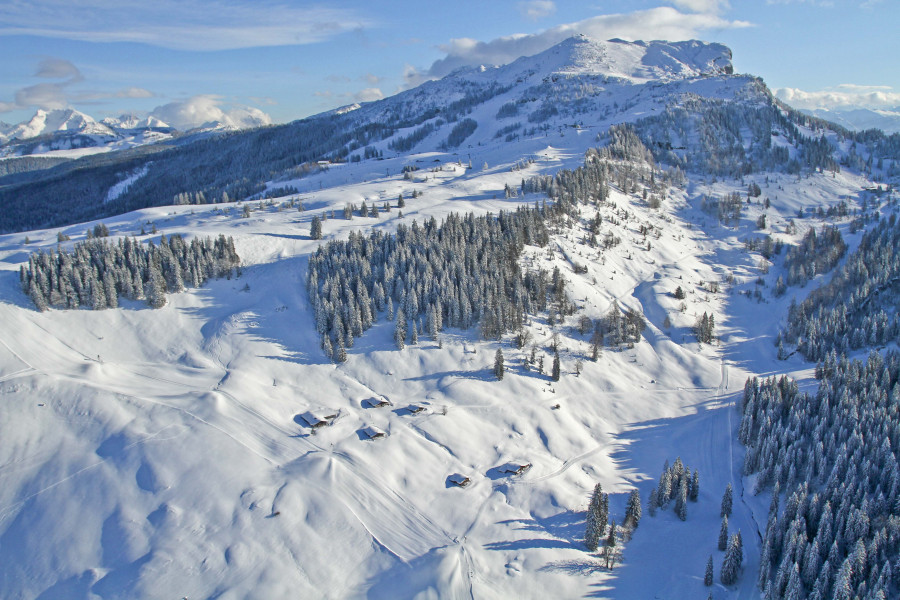
A little further east, another Bavarian-Austrian ski area awaits winter sports enthusiasts: Steinplatte - Winklmoosalm. Here there are 44 mainly blue and red marked slope kilometres. Beginners are best off starting in Reit im Winkl on the German side of the ski area, because the slopes at the Winklmoosalm are almost exclusively marked in blue.
On the Steinplatte with its starting point at Waidring in the Tyrolean Pillerseetal, the slopes are marked in red and are a little more challenging. A challenge for sporty skiers is the black-marked Nordhang run from the 1,869-metre-high summit of the Steinplatte to the valley station of the Plattenkogel chairlift.
Ischgl - Samnaun (Silvretta Arena)

The Tyrolean ski resort of Ischgl together with the Swiss Samnaun forms the Silvretta Arena with almost 240 kilometres of pistes. While Ischgl lives up to its international reputation as a party mecca, the traditional mountain village of Samnaun is suitable for guests looking for peace and quiet. In addition, the only duty-free town in Switzerland has probably the highest shopping mile in Europe to offer.
The whole skiing area can best be explored on the "Schmugglerrunde" (engl. smugglers' circuit). This offers three variants, each 36, 25 and 20 kilometres long. The two longer variants - "Schmugglerrunde" Gold and Silver - are more suitable for demanding skiers. The Bronze Round with its simple blue marked slopes is also suitable for beginners.
Portes du Soleil

With twelve ski resorts in Switzerland and France and a total of around 650 kilometres of pistes, Portes du Soleil is one of the largest ski areas in the world. The area stretches from Mont Blanc in France to Lake Geneva in Switzerland and includes hundreds of pistes as well as around 200 ski lifts and around 100 mountain restaurants. With a few exceptions, the piste network is completely connected via lifts, so that winter sports enthusiasts have an almost endless number of runs at their disposal.
In addition, the region often has an average snow depth of almost eight metres between mid-November and the end of April. On top of this, there is an impressive view of the 4,810-metre-high Mont Blanc.
Zermatt - Cervinia

From the Swiss Zermatt, we go to the Italian Cervinia. Together, the two ski areas on the world-famous Matterhorn offer 360 kilometres of pistes. 220 kilometres of slopes alone are marked in red, making Zermatt - Cervinia a paradise for advanced skiers. But with 75 blue and 27 black marked downhill kilometres, even beginners and real pros will find more than enough possibilities.
The Theodul Glacier can be reached from both valley towns and offers cross-border skiing pleasure 365 days a year. With a location at up to 3,883 metres, Zermatt is also the highest ski area in the Alps.
Via Lattea
The Via Lattea ski alliance - which incidentally means "Milky Way" in english - comprises 400 kilometres of slopes in Italian Piedmont (in detail the ski resorts of Sestriere, Sauze d'Oulx, Sansicario, Cesana, Pragelatio and Claviere near Turin) and the French ski resort of Montgenèvre. There are around 70 lifts to take you up to 2,800 metres above sea level. 220 kilometres of slopes alone are marked in red and are therefore of medium difficulty. Beginners will also find a true skiing Eldorado with almost 100 kilometres of blue-marked pistes, while sporty skiers can also let off steam with over 80 kilometres of black-marked slopes.
In about six hours you can ski the whole area on the "Via Lattea Tour", which leads from Cesana in Italy across the border to Montgenèvre.
La Rosière - La Thuile
At the 2,641-metre-high Mont Belvedere on the Little Saint Bernard Pass, the pistes of La Rosière in the French Savoy and those of La Thuile in the Italian Aosta Valley merge. The "Espace San Bernardo" network thus offers a total of 160 km of pistes on 80 runs and, quite incidentally, a fantastic view of the Mont Blanc.
Beginners should set up camp in La Rosière in France. The gentle slopes are ideal for the first swings. La Thuile with its numerous red marked slopes is recommended for more advanced winter sports enthusiasts. A real challenge for sporty skiers is the Tre Franco Berthod run with a gradient of over 70 percent - not without reason World Cup races are held here.
Sella Nevea - Bovec Kanin
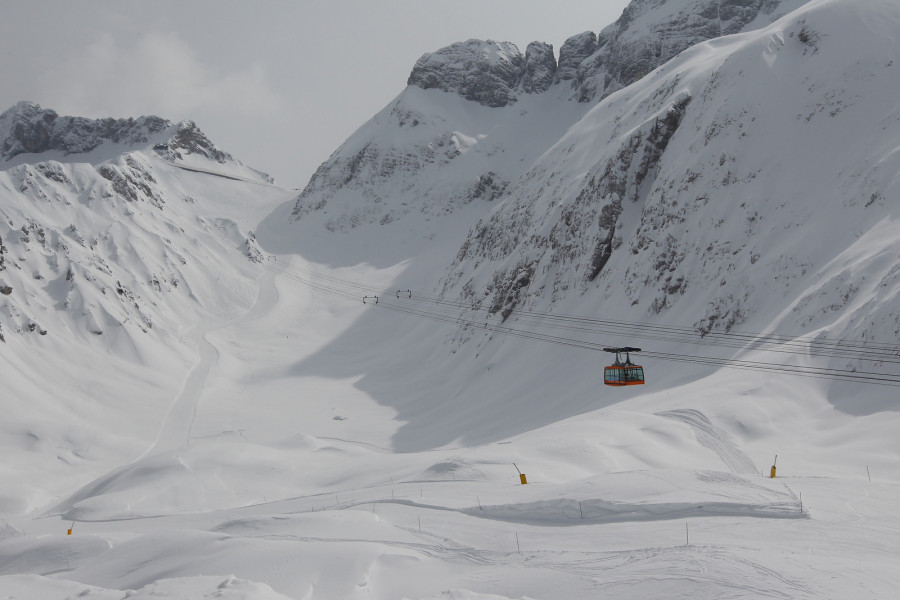
Together with the Slovenian ski resort Bovec Kanin, the Italian winter sports resort Sella Nevea forms a 30 km cross-border ski area. The region in the Julian Alps is also known as a "snow hole" and usually has a particularly long ski season. Most of the slopes are marked in red and therefore well suited for advanced skiers. However, Sella Nevea also offers beautiful practice slopes in the valley area so that beginners can practice their first turns undisturbed.
A special highlight on the Slovenian side: from the top of the 2,292-metre-high Sedlo you have a view as far as Trieste and the Mediterranean Sea when the weather is good. No other ski resort really has that to offer.

